Revision Total Hip Replacement
What is Revision Total Hip Replacement?
Total hip replacement is one of medicine’s most effective treatments. Total hip replacement allows patients to live more active lifestyles without crippling hip pain in the great majority of situations. A hip replacement, on the other hand, might fail over time for a variety of reasons. If this happens, your doctor may prescribe a second procedure to remove some or all of the original prosthesis’ elements and replace them with new ones. Revision complete hip replacement is the name for this treatment.
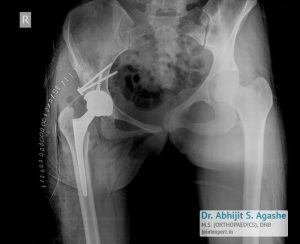
When is a Revision Total Hip Replacement is recommended?
Loosening and Wear of Implants:
An implant must remain securely linked to the bone in order for a complete hip replacement to operate effectively. The hip replacement components were either cemented into place or “push-fit” into the bone during the initial operation to allow the bone to grow onto them. However, the bone may fail to grow onto press-fit components in some cases. Furthermore, cemented or press-fit components that were previously firmly bonded to the bone might loosen with time, resulting in hip discomfort. The cause of loosening isn’t always evident, although it might be due to recurrent high-impact sports, extra body weight, or wear of the plastic liner between the ball and the metal cup.
Recurrent Dislocation:
The ball-and-socket construction of a hip replacement is similar to that of your native hip. The ball must stay within the socket for a hip replacement to perform properly. The ball can get displaced from the socket due to trauma or specific hip postures. The medical name for this is “hip dislocation.” Recurrent hip dislocations may necessitate revision surgery to properly align your hip joint or the implantation of a specific implant designed to prevent dislocations.
Fracture:
A periprosthetic fracture happens when a bone breaks surrounding the implant’s components. The most common cause of these fractures is a fall, and they frequently necessitate revision surgery. Your doctor will evaluate many criteria when determining if a revision is necessary, including the quantity of residual bone, whether your implant is loose, and the location of the fracture.
Infection:
Any surgical surgery, including total hip replacement, has the risk of infection. Bacteria attach themselves to the surface of the prosthesis, causing infection. Infection might strike while you’re still in the hospital or after you’ve returned home. It might even happen years later. It can be uncomfortable and the implant may lose its adhesion to the bone if a complete hip replacement becomes infected. Even if the implant is securely attached to the bone, the infection may cause discomfort, instability, and drainage. Revision surgery is frequently required because germs cannot be easily removed from a joint replacement with antibiotics alone.
Metal Allergy and Reaction to Metal Ions:
Metals used in implants can break down or degrade over time, causing microscopic particles to fall off the device and into the surrounding area. This is more prevalent with “metal-on-metal” devices, which include metal ball and socket components. Sensitivity to the metal ions in these particles can cause injury to the bone and soft tissues around the hip, necessitating revision surgery in some individuals. A patient’s allergy to the metal used in implants might produce discomfort around the implant site in very rare circumstances. However, there is no conclusive agreement among clinicians in this scenario about metal allergy, and additional research is needed.
Why do you need Hip Replacement Surgery?
A hip replacement revision may be recommended by your doctor to replace a damaged artificial hip joint with a new one. Only if previous treatment options have failed to improve your health will your doctor consider a hip replacement revision. Inquire about all of your treatment choices with your doctor, and consider obtaining a second opinion.
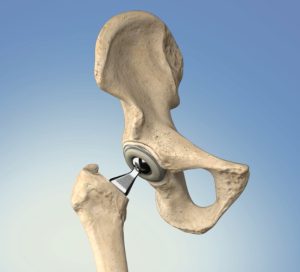
Medical Check-Up:
A full physical examination with your primary care physician will be required several weeks prior to revision surgery. This is to guarantee that you are in good enough health to have surgery and recover fully. Prior to surgery, patients with chronic medical issues, such as heart disease, may be assessed by a specialist, such as a cardiologist.
Tests
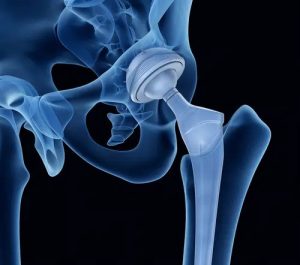
Imaging tests are performed. To understand more about the state of your hip, your doctor will generally request imaging tests. This might involve the following:
- X-rays: X-rays are used to examine dense objects such as bone. X-rays of the joint replacement may be ordered by your doctor to check for loosening or changes in the location of the components.
- Other types of imaging examinations: If the prosthesis has loosened from the bone, a nuclear medicine bone scan may be used to identify this. A magnetic resonance imaging (MRI) or computed tomography (CT) scan may be performed to detect why your hip has failed and the status of the bone in some circumstances.
- Tests in the lab: Your doctor may request blood tests to see whether you have an infection or if the metal components in your hip are causing you problems. Your hip may also be aspirated by your doctor. A needle and syringe are used to extract joint fluid, which is subsequently examined in a laboratory to see if the infection is present.
Home Planning
Because your movement will be limited following surgery, you may require assistance with duties such as cooking, shopping, bathing, and laundry for many weeks if you live alone. Your doctor’s office, a social worker, or a hospital discharge planner can aid you in making plans for someone to support you at home.
You may need to stay in a nursing facility or rehabilitation centre after you leave the hospital, depending on your condition. If required, your healthcare team can also assist you in arranging a short stay in an extended care facility throughout your rehabilitation.
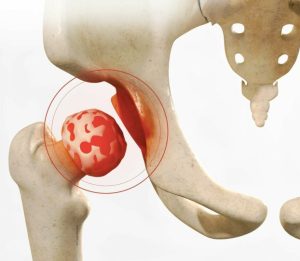
Risks and Complications
The following are some of the potential risks and problems of revision surgery:
- Heterotopic ossification occurs when new bone forms where it is not ordinarily found
- The bone does not adhere to the metal implant
- Inequality in leg length
- Dislocation
- Infection
- Clots in the blood
A pulmonary embolism is a blood clot that forms in the lungs
What is the Procedure?
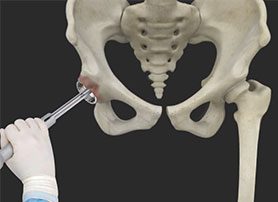
Revision total hip replacement is a more complicated treatment than primary total hip replacement, and it takes longer to complete. The procedure usually takes several hours. To begin, your doctor will trace the incision line from your original total hip replacement surgery. However, the incision can be lengthened to allow for the removal of the old components. Your doctor will expose the hip joint after the incision is done. Your doctor will evaluate the soft tissues in your hip after exposing the joint to ensure that they are clear of infection and other complications, such as a response to the metal components. He or she will examine all components of the prosthesis to see which have gotten worn, loose, or moved out of place.
Your doctor will next gently remove the original implant, preserving as much bone as possible. This is also removed if cement was utilized in the original total hip replacement. Removing the cement from the bone is a time-consuming operation that adds to the revision surgery’s complexity and duration. In order to remove a well-fixed stem, a controlled “fracture” of the femur (thighbone) is occasionally done. Once the replacement stem is in place, the femur will be reassembled. After removing the original implants, your doctor will prepare the bone surfaces in the pelvis and femur for the revision implants. There may be considerable bone loss in certain places in some circumstances. Metal augments or bone grafts can be used to compensate for the skeletal deficiencies if this occurs. Finally, the specialist revision implants will be inserted by your doctor. Several screws are frequently necessary to keep the new cup in place until the bone grows in. Your doctor will examine the joint’s mobility to confirm that the implants are securely in place and that the ball is stable within the socket. Prior to inserting and attaching the final components, special “trial” implants are frequently evaluated. A drain may be inserted into your hip to collect any remaining fluid or blood following surgery. After surgery, you’ll be taken to the recovery room, where you’ll be observed for many hours while your anaesthetic recovery progresses. You will be escorted to your hospital room after you wake up.
Why Choose Dr. Abhijit S. Agashe ?
Dr Abhijit S. Agashe is the Best Knee Replacement Surgeon in Pune who performs the surgery using all the advanced technology which gives the best result. He is the most experienced orthopedic surgeon in Pune
Agashe Clinic
- Research Award by Bone and Joint Decade – 2004
- Esteemed Fellowship Offered By The AO Group From Switzerland – 2008
- Fellowship With Prof. Willium Peterson From Germany In Sports Medicine – 2007
Address
- Office no 206, Siddharth Towers Building no 1 Near Karishma society, Kothrud, Pune, Maharashtra 411029
- 086006 53737
- [email protected]



